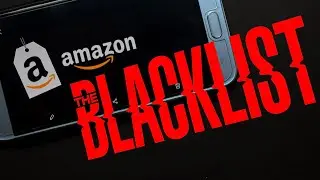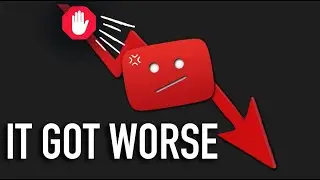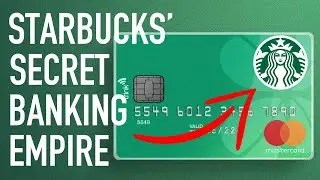The END of Influencer Culture
There is a universal backlash against big influencers. According to research most people don’t like them, believe them or trust them.
= = = = = = = = = = = = = = = = = = = = = = = =
Watch YouTube going to war with Ad Blockers
PART 1 • YouTube Regrets Banning Ad Block
and
PART 2 • YouTube's Ban on Ad Block Gets WORSE ...
= = = = = = = = = = = = = = = = = = = = = = = =
Studies reveal a significant decline in audience trust towards social media influencers. According to a Why Pulse study, nearly half of teenagers and young adults aged thirteen to twenty-two believe influencers lack the influence they once had. Even more striking, fifty-three percent express greater trust in the opinions of strangers online than in social media personalities. Furthermore, only three percent of consumers feel influencers significantly impact their purchasing decisions.
This decline in trust has led to the emergence of "influencer fatigue." As inflation rises and financial stability becomes harder to achieve, many seek authenticity and struggle to relate to influencers with large followings.
What is driving this rise in influencer fatigue? Let’s examine key events leading to this trend.
In February twenty twenty-four, Tarte Cosmetics sent thirty influencers on an all-expense-paid trip to Bora Bora via private jet, replete with champagne and caviar. The influencers stayed in luxurious bungalows and created extensive content while promoting Tarte products. This followed Tarte's history of sending influencers on lavish trips, from Turks and Caicos in 2015 to Florida in 2022. However, backlash erupted after the brand sent fifty influencers to Dubai in 2023, resulting in widespread criticism for being tone-deaf amidst a cost-of-living crisis.
Some may dismiss this as mere outrage, but research supports the notion of rising influencer fatigue. Influencer marketing, once a compelling alternative to traditional celebrity endorsements, has lost its appeal. The halo effect, where positive attributes are ascribed to attractive or talented individuals, no longer applies as it once did. According to Why Pulse, only three percent of consumers view influencers as impactful in purchasing decisions. An April twenty twenty-three study by EnTribe found that just twelve percent of respondents trust influencer-promoted products.
Several factors contribute to this disillusionment.
First, the social media landscape is oversaturated with repetitive sponsored content. Many influencers are capitalizing on advertising revenue, leading to an influx of similar content. Users are bombarded with influencers promoting products through a monotonous aesthetic. For instance, 47 percent of consumers express fatigue from repetitive influencer posts.
This has led to the rise of the “de-influencing” movement, where creators advocate against excessive consumption and criticize influencers for promoting too much sponsored content. On TikTok, the de-influencing hashtag garnered over five hundred eighty-two million views within a year, reflecting a shift toward genuine engagement and community-building.
Second, the prevalence of fake influencers undermines credibility. Many influencers boost their metrics through purchased followers and engagement, with studies showing that up to seventy percent of followers for some influencers may be fake. This erosion of trust fuels skepticism towards influencer marketing.
Third, instances of slacktivism and fraudulent activities among influencers have damaged their reputation. High-profile cases of influencers exploiting causes for personal gain have left audiences skeptical.
Fourth, the promotion of subpar products damages consumer trust. Scandals surrounding influencer fraud highlight a growing concern, although exposure of these issues can serve to protect future consumers.
Fifth, social media algorithms often force-feed content, making it hard for users to avoid influencers they do not wish to see. Users are now subject to algorithms that prioritize engagement over choice, resulting in persistent exposure to unwanted content.
Sixth, the saturation of similar sponsors among influencers leads to repetitive promotions. Creators frequently promote the same brands, which dilutes the value of sponsored content and frustrates audiences.
Finally, there is a significant shift toward authenticity, driven by millennials and Gen Z. These demographics are increasingly disenchanted with staged, generic content. They seek real, meaningful engagement instead of the typical advertisements for teeth-whitening kits or appetite-suppressing products.
While luxury influencers will continue to appeal to those interested in aspirational lifestyles, research indicates that many young people find these portrayals less persuasive. As social mobility and financial success seem increasingly unattainable, the allure of influencer culture is fading.



























